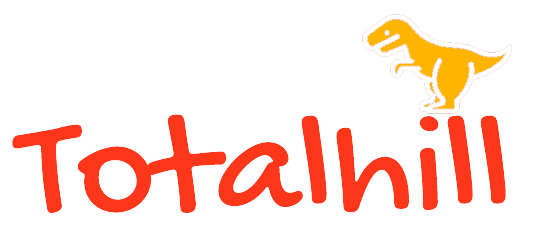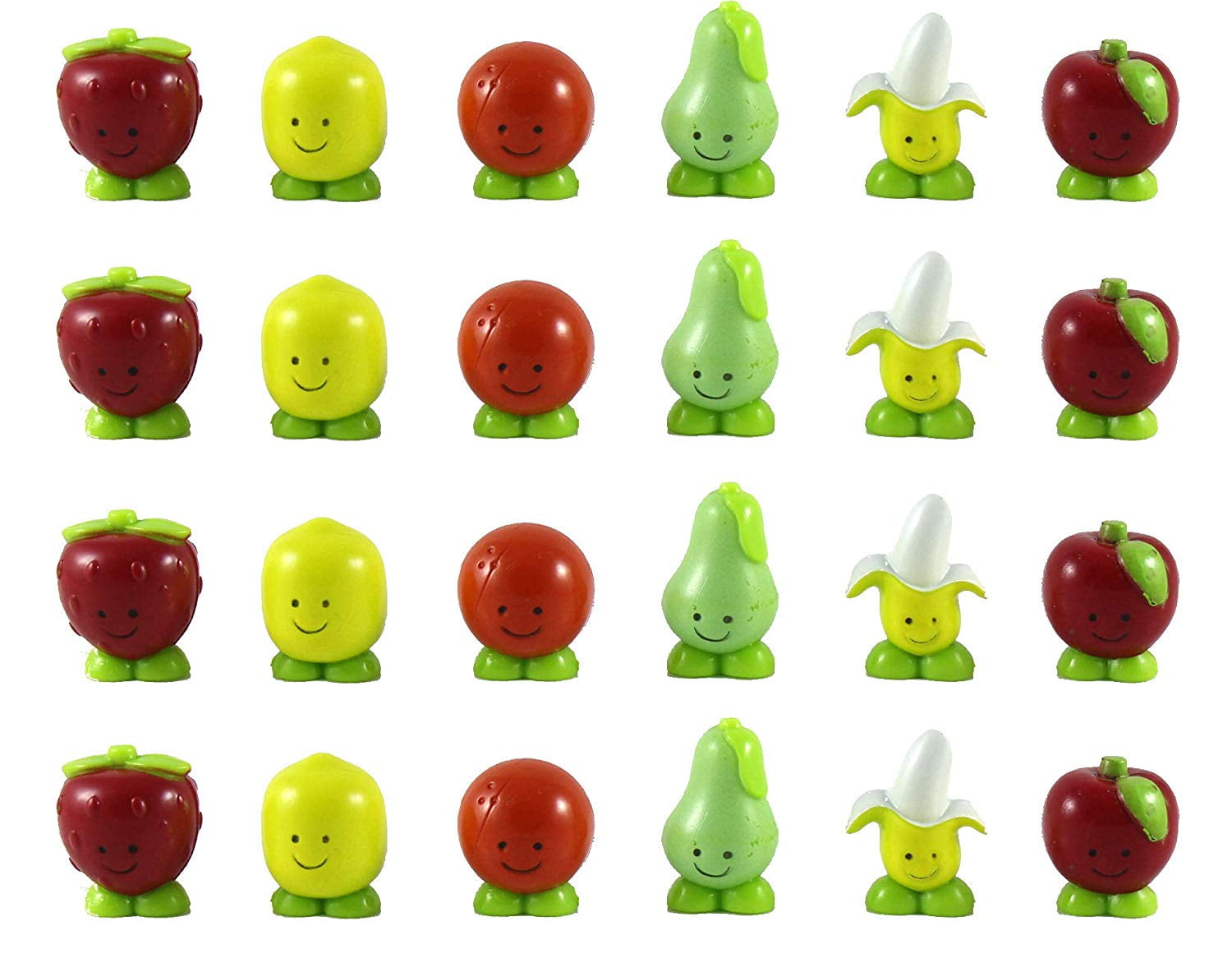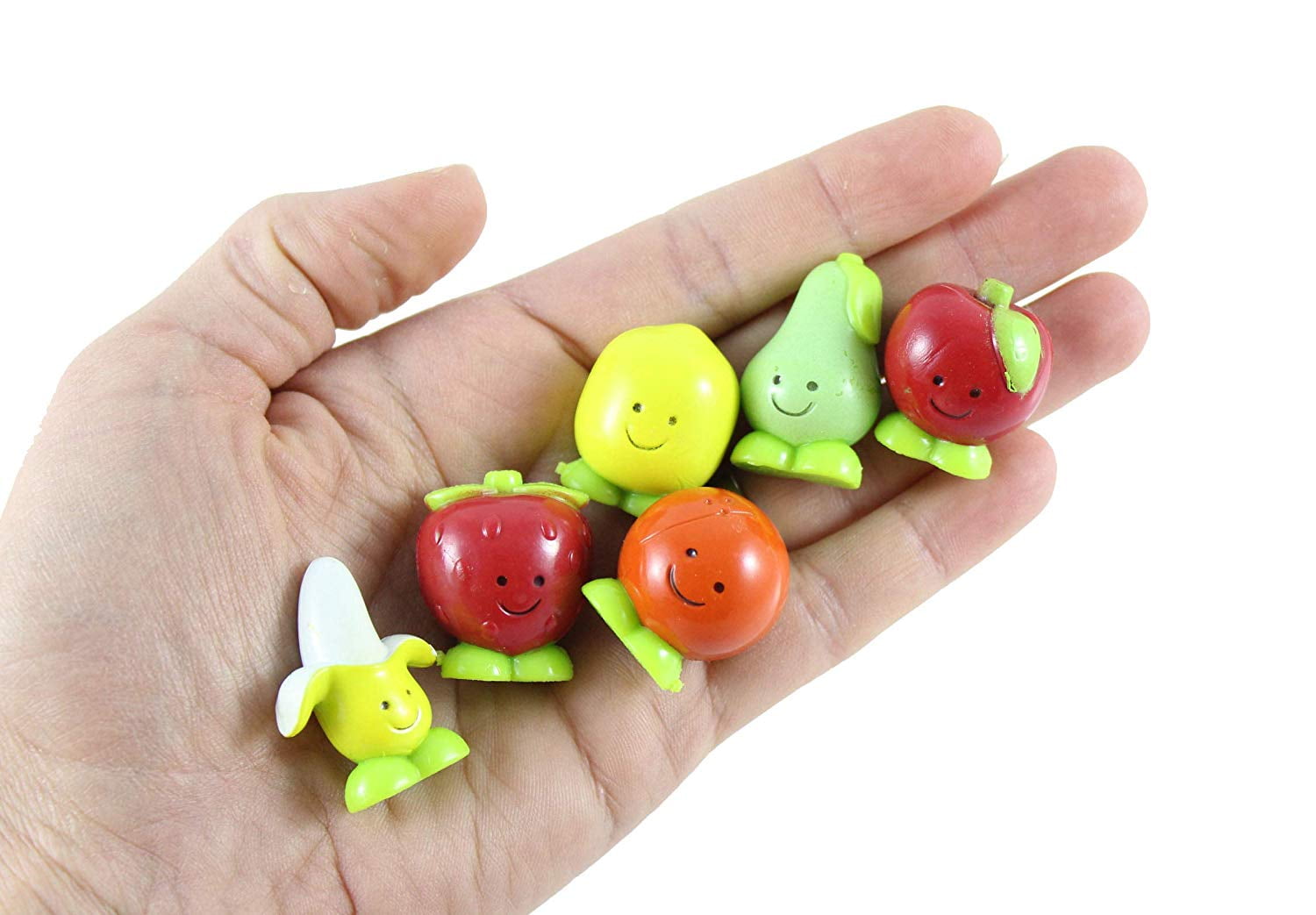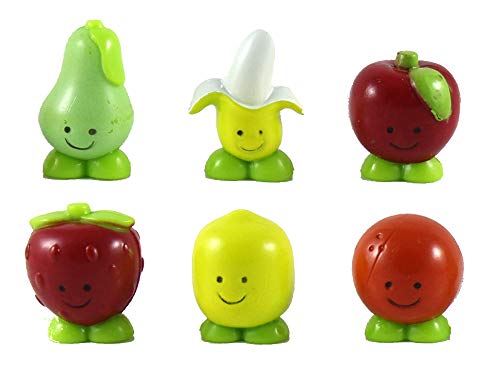24 Cute Fruit Food Mini Toy Figurines Replicas – Math Counters, Sorting or Alphabet Objects, Playsets
$8.99
1498 in stock
Includes 24 Food Figurines. These cute little toy figurines are adorable little mini fruit foods. They are perfect for pretend play, sorting or to use as math counters. These are also the perfect size to use as alphabet object miniatures. Size – 1". Includes: Apple, banana, orange, pear, strawberry and lemon. I have multiple sets of food characters including: frozen treats, fast food, sweets, fruit, and holiday foods. Ways to use these in early math: Math manipulatives, or counters, are any small objects that kids can count or move around to help them work out simple math problems. Hands-on way to learn math such as counting, adding, subtracting, making patterns and comparing numbers. For example, you could take the addition problem 3+2=? Have the students make a group of 3 foods and 2 of a different food. Then push them together and count your total. They are also great for showing the relationships among numbers. If you had a row of 10 counters and a row of 5 counters you can easily see that 10 is bigger than 5. You can use these as a hands-on way to teach basic story problems. For example, if Susie had 7 less foods than Chad, who had 10, how many did Susie have? Patterning. Use the counters to make simple patterns such as AB, ABC, ABBC etc.
- Includes 24 Food Figurines – Mini Fruit Characters. Size – 1". Includes: Apple, banana, orange, pear, strawberry and lemon. I HAVE 4 OTHER MINI FOOD CHARACTER SETS!
- These cute little toy figurines are adorable little mini fruit foods. They are perfect for pretend play, sorting or to use as math counters. These are also the perfect size to use as alphabet object miniatures.
- These are perfect for early math as well because they are perfect for patterning and counting! Hands on way to learn math such as counting, adding, subtracting, making patterns and comparing numbers.
- Math manipulatives, or counters, are any small objects that kids can count or move around to help them work out simple math problems. For example, you could take the addition problem 3+2=? Have the students make a group of 3 foods and 2 of a different food. Then push them together and count your total.
- You can use these as a hands-on way to teach basic story problems. For example, if Susie had 7 less foods than Chad, who had 10, how many did Susie have? Patterning. Use the counters to make simple patterns such as AB, ABC, ABBC etc.
| Dimensions | 1 × 0.5 × 0.5 in |
|---|
Only logged in customers who have purchased this product may leave a review.
Related products
Pretend Play Toys for Boys
Sophia’s 9 Piece Camp Stove and Food Set for 18′ Dolls, Multicolor
Pretend Play Toys for Boys
Melissa & Doug Grocery Boxes for Pretend Kitchens and Shopping (11 pcs)
Pretend Play Toys for Boys
Just Play Totally Tiny Fun with Food Sets, Taco Time, Kids Toys for Ages 4 up
Pretend Play Toys for Boys
Kids Toy Waffle Iron Set with Music and Lights – Fun Pretend Play Waffle Making Kit by Hey! Play!
Pretend Play Toys for Boys




Reviews
There are no reviews yet.